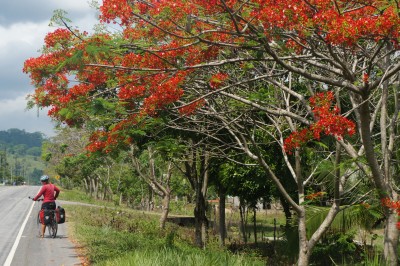
Honduras (Part 2): A Five Star Country
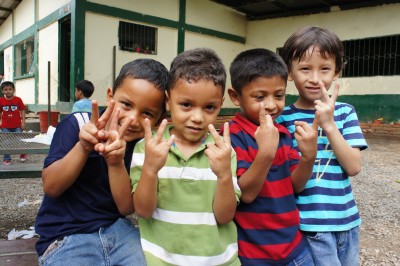
In the end, we barely cycled in Honduras, this time around, despite spending three weeks of our cycling trip there. The first hurdle was that I got dengue fever in Copan, soon after leaving Guatemala. The blood test was a bit of a scare, when my blood just wouldn’t come out, and eventually a thick black liquid was drawn. The other hurdles, a short volunteering stint and a scuba diving vacation, were planned by us, so I can’t exactly complain.

We usually find it extremely tiring to spend a day exploring ruins, but the Maya ruins of Copan were on our route, so we made an exception. We arrived early, and had the place literally to ourselves. The very elaborate carvings on vertical chunks of granite reminded me of short totem poles, but the most impressive detail was the flock of scarlet macaws, constantly squabbling above.
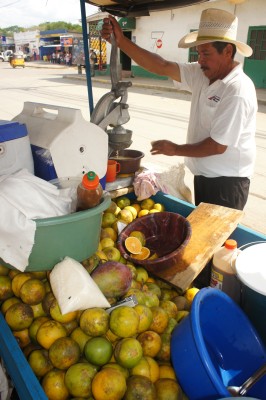
The town of Cofradia appears to be a regular and uninteresting Honduran town, but perhaps that’s the charm. We volunteered at the Cofradia Bilingual School for just over a week as English teaching helpers. The kids were misbehaved, the cafeteria served almost exclusively fried food, and we gained a newfound admiration for the long term volunteers who spend a year or two in this environment. There was an intense heat wave, and the kids were even sent home early one day due to the oppressive temperatures. To combat the heat, we dropped by the main square every day to visit our ‘dealer’ Marcus, who supplied us with fresh orange juice, served in small plastic bags.
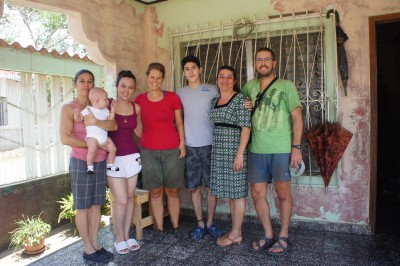
During our time at Cofradia we stayed with a local family. Norma fed us the staples of a Honduran diet, such as the ever present baleadas – thin flour tortillas filled with beans, cheese and often eggs, and catrachas, crispy deep fried corn tortillas with that same topping. The brothers, Bettio and Jose David, were often busy playing soccer on a Playstation hooked up to a big screen TV. The water supply was erratic, but either way the shower didn’t work so our showers were of the bucket variety.
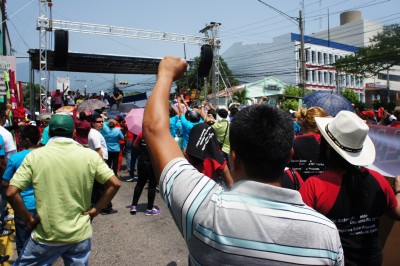
On May 1st, the international worker’s day, we visited San Pedro Sula, the second biggest city in Honduras and supposedly one of the most dangerous cities in the world. The parade was noisy and smokey, and we were happy to see that the worker movement appears to be alive and kicking. To cool down we went to see a movie at City Mall, a shopping center which could have easily been in the US. So, for a few hours we were transported to the heart of American consumerism, a stark contrast to the workers chanting in the main square.
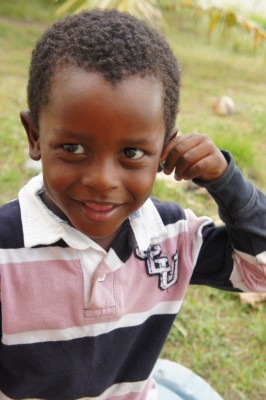
La Ceiba is famed for its crime, and indeed the center of town was eerily deserted at night, a rare sight in Honduras. In the morning the market was bustling, and we discovered an intensely flavoured mango, the opposite of those watered down ones we sometimes get in Canada. We didn’t stick around for long, instead heading to the tiny village of Sambo Creek, populated by the dark black Garifuna people. The hotels were dingy, but as usual asking around yielded a solution: a woman had two beach side rooms to rent. A bowl of hearty coconut fish soup signalled our arrival to the Carribean coast, and the return of fish to our diet.

For many years we had been hearing from fellow travelers about the Carribean island of Utila. Normally that would scare us away, since with such word of mouth it was bound to be a tourist hang out, but in this case it was worth it for the excellent and cheap diving. We took an advanced course, which included some new excitements, such as night diving, and diving to the 30m deep Haliburton wreck, which was sunk for diving purposes, and now sports various artifacts, such as a few bicycles and a laptop. We enjoyed the intensely colourful coral, the warm water which makes it possible to dive without a wetsuit, and a price tag of $25 per dive (gear and boat ride included), but were left baffled by the fact that most instructors and dive masters take every opportunity to smoke.
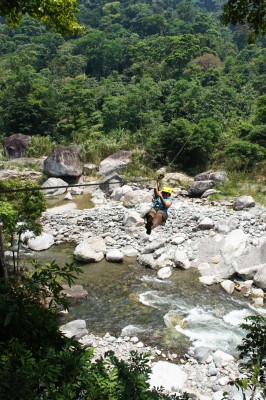
Our next stop was the Jungle River Lodge, set right on the shore of the Rio Cangrejal, with its many sculpted granite boulders. Every day we took a long swim in the river, including some cliff jumping and climbing. All over Central America canopy tours are becoming popular. We finally succumbed to curiosity and took a ride, which involved zooming down a steel cable, high in the trees, and over the river. The short walk was also interesting, when we almost stepped on a bright red coral snake, apparently highly venomous. The next day we rafted our way down the Rio Cangrejal, admiring the rock formations on the way, and (of course) dropping a few waterfalls.
We used buses to get around, and traveling without the bikes and camping gear, indeed with just one small backpack for the two of us, raised a few surprised eye brows, and felt so much lighter (and yes, easier!).
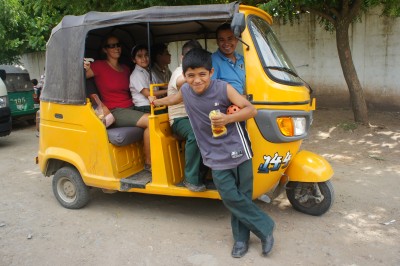
Honduras has a bad reputation for crime amongst travelers, many of which choose to avoid it altogether. In fact, before leaving Vancouver, a friend of a friend who grew up in Honduras, recommended we skip it. However, from talking with locals, volunteers, and reading the paper, although the crime rate is high, and despite a few horror stories that get passed around, it mostly consists of crime between gangs and petty crime. A curious fact is that Honduran currency is based almost solely on paper money, so that even the moto taxi drivers and orange juice sellers pull out a fat wad of notes nonchalantly.
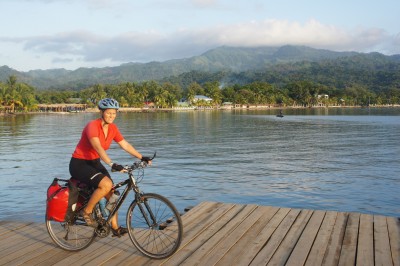
Finally, we were back on our bikes, cycling from Puerto Cortes towards the Guatemalan border, and beyond – Belize. We spent our last night in Honduras in Omoa, a small village that has lost most of its beaches due to a nearby natural gas project. For dinner we had two huge plates of fish in garlic sauce, some of the best fish we’ve had in a while.
If you skip Honduras, you’ll be missing out on a five star country! (at least, that’s the number of stars they have on the flag).
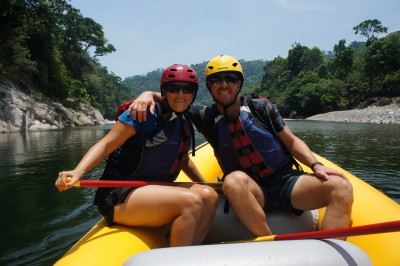
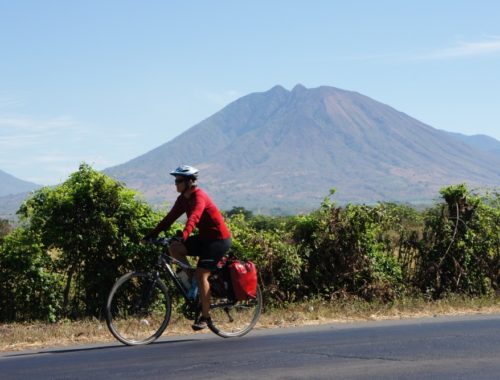
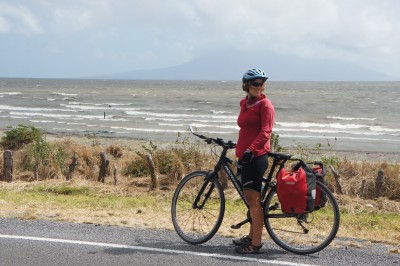
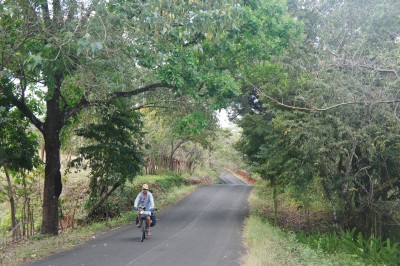
2 Comments
Mari
Loved your experiences in Honduras and will tell my friend about her 5 star country! Counting the days…
Pingback: